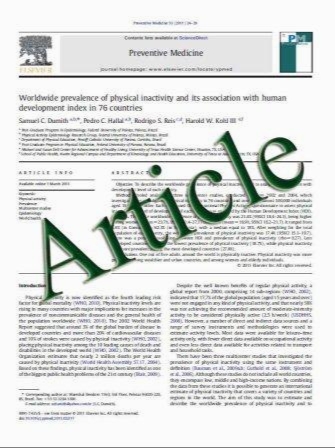Myopic choroidal neovascularization treated by intravitreal bevacizumab: comparison of two different initial doses
- نوع فایل : کتاب
- زبان : انگلیسی
- مؤلف : Jose M. Ruiz-Moreno & Javier A. Montero & Pedro Amat-Peral
- چاپ و سال / کشور: 2011
Description
Background Myopic maculopathy is the leading cause of subfoveal choroidal neovascularization (CNV) in patients under 50 years of age. New antiangiogenic drugs are being used off-label with varied therapeutic schedules to treat CNV. The aim of this study is to report the anatomical and visual outcomes of myopic choroidal neovascularization (CNV) treated by two different schedules with intravitreal bevacizumab. Methods Prospective, comparative, consecutive, nonrandomized, multicentric, interventional pilot study. Two groups of highly myopic patients with subfoveal and juxtafoveal CNV were treated by monthly intravitreal injections with 1.25 mg bevacizumab. Group 1 comprised 19 eyes treated by three consecutive monthly intravitreal injections. Group 2 comprised 20 eyes treated by one single intravitreal injection. Patients were evaluated for best-corrected visual acuity (BCVA) and optical coherence tomography (OCT) at baseline and then monthly. Fluorescein angiography was performed at baseline and when CNV activity was suspected. Further intravitreal injections were performed if CNV activity was detected. Results Both groups were matched for age, spherical equivalent, LogMAR BCVA, and central foveal thickness (CFT) as determined by OCT at baseline and number of eyes with previous PDT treatment. The average number of letters gained was 6.3 in group 1 vs 7.2 in group 2 (p= 0.001 and 0.09 respectively, Student's t-test for paired data). Changes in OCT were not significant for either group by the end of follow-up. The mean number injections performed was 3.2 in group 1 vs 1.7 in group 2 (p=0.00, Mann–Whitney test). Four recurrences (four eyes) occurred in group 1 vs 15 (seven eyes) in group 2 (p=0.001; Fisher's exact test). Conclusions Both schedules achieved similar results improving BCVA, though the second group required a lower number of injections, showing a higher rate of recurrences during the first year.
Graefes Arch Clin Exp Ophthalmol (2011) 249:595–599 DOI 10.1007/s00417-010-1599-z Received: 26 July 2010 / Revised: 28 November 2010 / Accepted: 2 December 2010 / Published online: 14 January 2011


